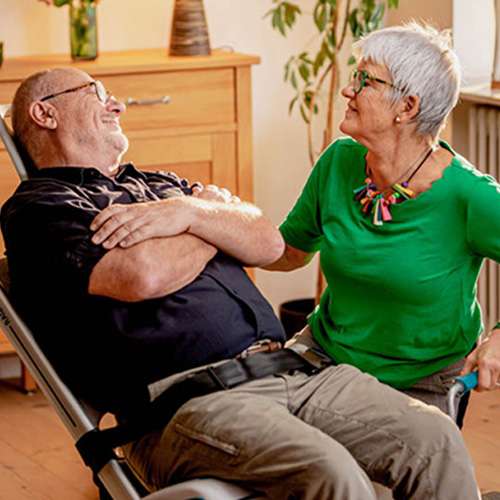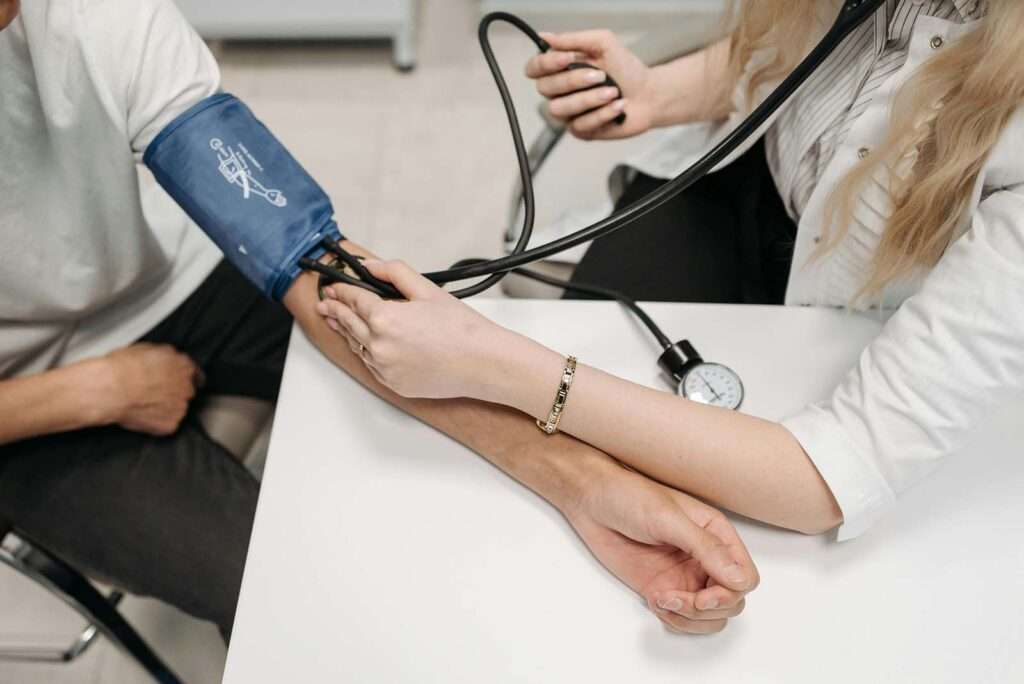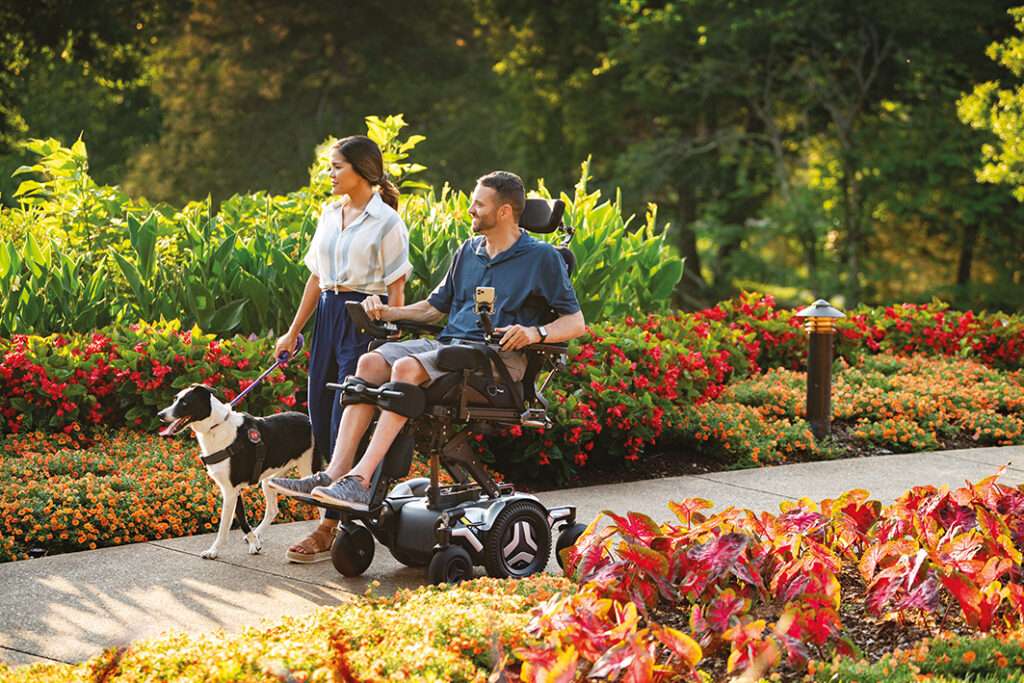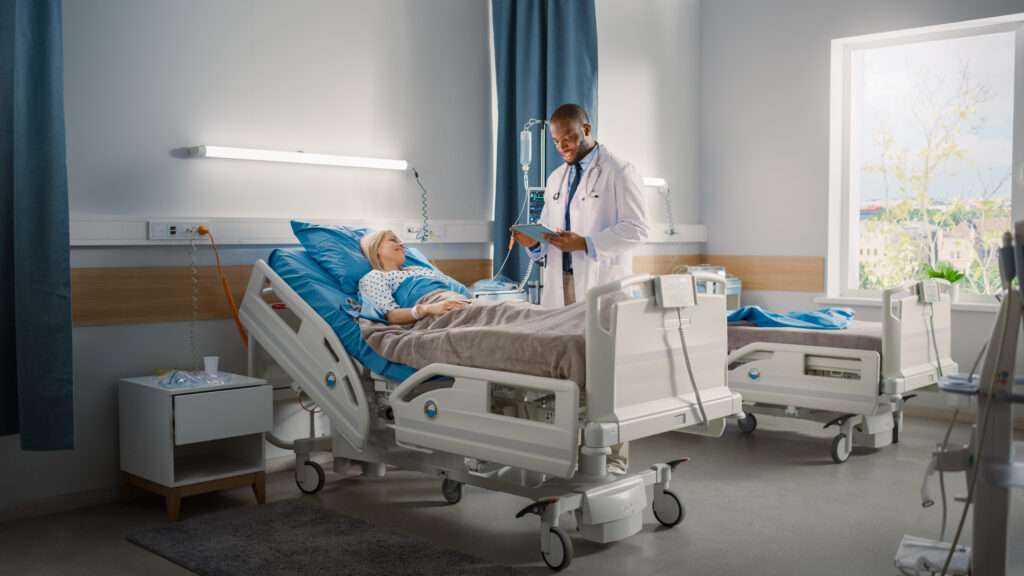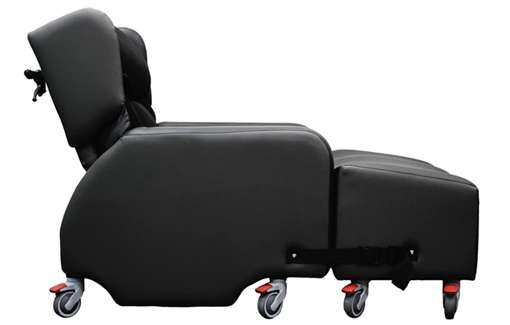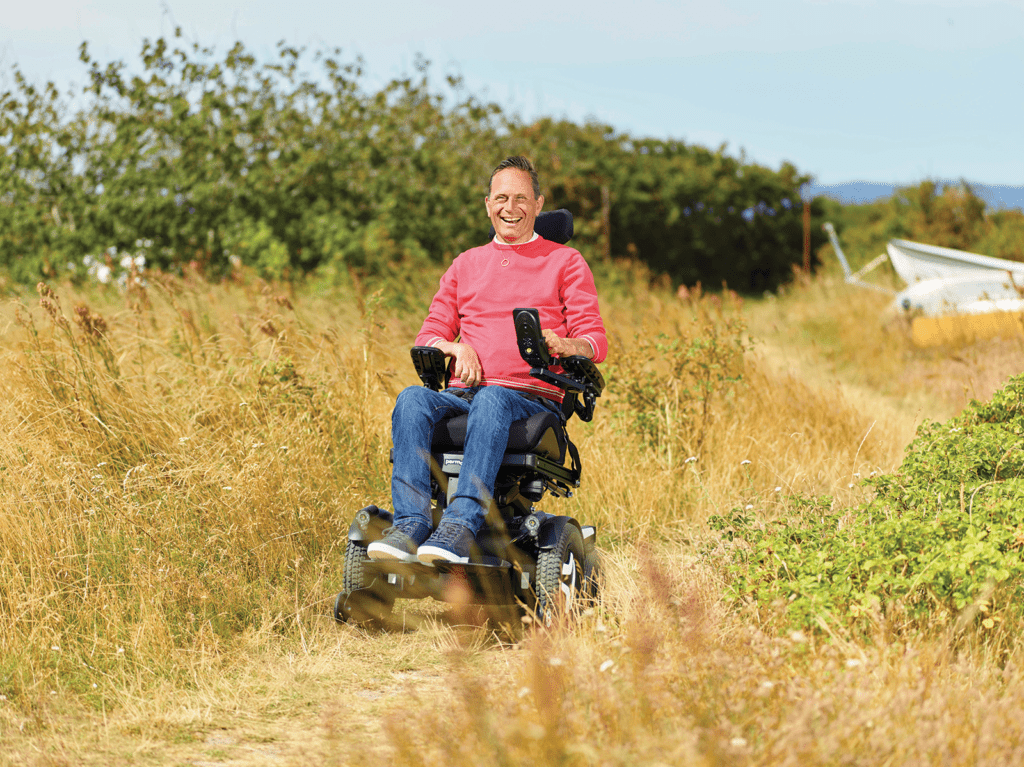Falls are a serious problem but the good news is there are a lot of solutions on the market to help with the issue. 95% of falls don’t result in a fracture, so rather than wait for an ambulance or paramedic to arrive and risk further health complications from a long lie, there are lifting devices that can assist someone to their feet in a safe and secure manner.
In this article we look at different falls lifting devices for uninjured patients, and consider the merits and drawbacks of each one, to give a balanced assessment of each product and where they work best.
First off, and no prizes for guessing, we sell the Raizer lifting chair, so naturally it’s our favourite. We’re not going to try and be judge and jury at the same time. The reason for this article is not to rate one product over another, but to set out the strengths and weaknesses of each product and assess which falls scenarios they are most appropriate for.
Jump straight to...
Raizer 2 Lifting Chair
Description
The Raizer 2 Lifting Chair is a motorised falls solution that clips together around the patient and lifts the patient to a seated position from the turning action of the back legs. It powered by battery and can be purchased with a headrest.
Pros
- Single-user operation – the Raizer is a relatively foolproof device, easy to assemble and disassemble and only requires one person to operate. No training or manual handling skills are required.
- Quick to deploy – the Raizer assembles and disassembles within seconds and performs a 60-second lift.
- No manual handling involved – the chair assembles around the patient while they are in a lying position on the floor. The lift is self-supported so the operator does not need use manual handling techniques to support the patient’s body. This reduces the risk of physical strain and injury for both carer and patient.
- High number of lifts per charge – the Raizer can carry out 70 lifts on a full charge. The battery retains its charge between lifts.
- Lightweight and portable – the component parts fit neatly into two separate carry cases which are easy to lift, or can be attached to a trolley for longer distances.
Cons
- Weight limit – the Raizer has a 23 stone (150kg) weight limit, so is not suitable for bariatric patients. There is an inbuilt safety mechanism which is triggered if the patient is over the weight limit; an audible alarm will sound and the device will slowly lower back down to the floor.
- Space needed either side of the patient – the Raizer can operate in confined spaces, but to assemble the leg and backrest sections together, some degree of space is needed either side of the patient.
- Entrapment risk – as the back legs move downwards and the backrest paddles move upward at the very beginning of the lift, there is some risk of entrapment, although rather negligible. Precautions can be put in place by folding the patient’s arms across their chest, ensuring items of closing are out of the way and keeping pets and children away from the Raizer when it is lifting.
Summary
Lift Fallen Inpatients
Raizer M Lifting Chair
Description
The Raizer M has the same design and lifting action as the Raizer 2, but operates via a manual crank handle, removing the need for electronics or battery charging.
Pros
- Single-user operation – easy to assemble and disassemble, the Raizer M only requires one person to operate. No training or manual handling skills are required.
- No batteries or charging required – the Raizer M operates with a crank handle so no battery charging or electronics are required, making it even simpler to use.
- No manual handling involved – the chair assembles around the patient in a lying position, and supports them as they are lifted, so no manual handling intervention is needed. This reduces the risk of physical strain and injury for both carer and patient.
- Silent lift — the chair doesn’t have an electric motor so there is no motor noise, creating a calm and peaceful environment for the patient.
- Lightweight and portable – the components fit neatly into two carry cases which are easy to lift and transport, or can be attached to a trolley for longer distances.
Cons
- Weight limit – the Raizer has a 23 stone (150kg) weight limit, so is not suitable for bariatric patients.
- Slower lift — the manual lift takes longer than the powered Raizer 2, so plenty of elbow grease required!
- Space needed either side of the patient – the Raizer can operate in confined spaces, but to assemble the leg and backrest sections together, some degree of space is needed either side of the patient.
- Entrapment risk – as the back legs move downwards and the backrest paddles move upward at the very beginning of the lift, there is some risk of entrapment, although rather negligible. Precautions can be put in place by folding the patient’s arms across their chest, ensuring items of closing are out of the way and keeping pets and children away from the Raizer when it is lifting.
Summary
Patient Lifting Equipment
Winncare Mangar Lifting Cushions
The Mangar inflatable lifting cushions sold by Winncare Group come in different versions; here we look at the Elk, Eagle and Camel.
Mangar Elk Lifting Cushion
Description
The most compact cushion in the range, the Elk inflates under the patient, one section at a time, to lift them to a sitting position.
Pros
- Single-user lift — the cushion only requires one carer to set up and operate, freeing up staff resource
- Reduces shear friction — the inflatable cushion helps spread the weight of the patient and provides a comfortable surface, reducing the risk of shear friction on the patient’s skin.
- Robust material — made from a similar material to lifeboats, the cushion is very robust so can be used outdoors if required.
- Compact and lightweight — the compressor and cushion are compact and lightweight so can be transported easily.
- 70 stone weight limit — perfect for bariatric patients
Cons
- No back support — the cushion only supports the patient underneath their body, there is no side or back supports to stabilise the patient as they are being lifted.
- Can destabilise patients with poor core strength — if the patient has a weak core or tends to slump to one side, the lift can cause instability. The patient needs to be in a sitting position on the floor before the lift can begin, which may not be possible if they have fallen in a confined area.
- More manual handling involved — the operator needs support the patient at the same time as operating the lift, to help them maintain their balance as they rise, causing more strain for the operator.
- Slower lift — the entire lift takes 3 minutes
- Low number of lifts per charge — the Elk only carries out 8 lifts on a single charge
Summary
Mangar Eagle Lifting Cushion
The Mangar Eagle inflates from under the patient but has an inflatable backrest that helps assist the patient into a sitting position as they are lifted.
Description
Pros
- Single user lift — the Eagle only requires one person to operate
- Supports back, neck and shoulders — it has a backrest that inflates to provide extra support for the patient
- Reduces shear friction — the pliable surface of the cushion reduces pressure and minimises friction on the patient’s skin
- Robust material — the cushion is made from similar material to lifeboats so is very durable and hard to puncture
Cons
- Slower lift — the duration of the lift is 3 minutes
- Low number of lifts per charge — only carries out 6 lifts on a full battery
- Patient transfer required — the patient has to be transferred onto the cushion before the lift can take place, increasing the risk of strain to the caregiver
Summary
Mangar Camel Lifting Cushion
Description
The Camel inflates from under the patient with the assistance of a backrest, helping the patient into a sitting position.
Pros
- Single handed lift — the cushion only requires one carer to operate
- Lifts from lying to recumbent position — the cushion supports the patient lying down then lifts them into a recumbent position with the aid of a backrest
- 50 stone weight limit — this is an ideal solution for bariatric patients up to 50 stone
Cons
- Time-consuming to operate — due to the number of cables and separate inflatable sections, the cushion is more time-consuming to operate and requires more space, increasing the risk of user error
- Low number of lifts per charge — the Camel only carries out 4 lifts on a single charge
- Slower lift — the duration of the lift is 3 minutes but is not continuous as each cushion inflates separately. The patient also needs to be positioned centrally on the cushion so the cushion doesn’t list to one side. These factors may cause the patient to destabilise during the lift.
- Patient transfer — the patient has to transfer onto the cushion, requiring the use of a slide sheet if the patient is in a lying position
Summary
Conclusion
We can see from these product reviews that the innate pros and cons of each product make them more suited to different scenarios.
With the Raizer 2 and Raizer M being foolproof to assemble, and no manual handling or training required, they are suitable for care homes with high staff turnover or agency workers, and business or domestic settings. The quick lift and high number of lifts makes them ideal for busy care environments where falls are more frequent, like dementia care homes, or emergency scenarios like the fire service. Read our case study here about how Hull Fire Service used the Raizer to respond to falls.
The Mangar lifting cushions require more input from the operator so are therefore more suitable for care staff trained in manual handling techniques, and where it may need to be used outdoors. Patients with poor postural support may need a more supportive lift like the Eagle or Camel instead of the Elk. The Camel is suitable for patients who are lying prone on the floor and have to be lifted from that position. The Camel and the Elk have higher weight limits so are ideal for bariatric patients. The Eagle is also an ideal option for the home as it can operate in a confined space.
We trust this overview of falls lifting products is informative and helpful, please contact us if you would like further information or want to make an enquiry.





